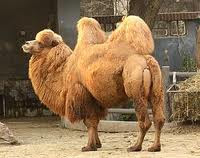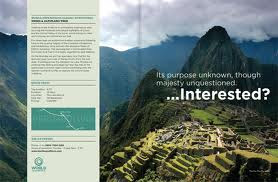"Drink Tea"
So before meeting and discussing ideas of ways to resolve this brief, it would be best to research into Tea to gain a greater knowledge. As a drinker of mainly green and white teas, this brief will broaden my knowledge of other varieties.
First of all, I looked at types of tea...
The tea palace website gives information on the four major types of tea; Green tea, Black tea, Oolong and white tea:
Black tea:
Black teas get their characteristic flavour and colour from a natural oxidation process, which follows initial drying and rolling of the leaves after they have been picked. Tea Palace offers a wide range of single estate black teas including world famous Assams, Darjeelings and Ceylons and a range of bespoke Black Blends.
Health benefits:
Low in Sodium, fat and calories
Reduces cardiovascular problems
Full of antioxidants
Negatives:
High caffeine content
Estrogen like effects
Decreased catechins
Decrease of iron absorption
Oolong tea:
Oolong, meaning Black Dragon, is usually from China and Taiwan (often called Formosa, its old Portuguese name). It is a semi-fermented tea, a cross between green and black teas, which is widely prized for its digestive benefits. Tea Palace offers a range of the finest oolong teas from both China and Taiwan, including Iron Goddess of Mercy (Ti Kuan Yin) and the highest grades of formosa Oolong teas.
Health benefits:
Controls obesity
Removal of harmful free radicals
Reduces stress
Treatment of skin disorders e.g, eczema
Negatives:
Contains caffeine similar chemicals stressful to the heart
Few diet-related benefits
Only small boost to metabolism
White tea:
White tea is the world's rarest tea as it can only be picked for a few weeks in any one year. Authentic white tea is only grown in the Fujian province in China where the exact method of processing is kept secret. What we do know is that white tea is made from a specific tea plant variety, as well as a particular processing method which raises small silvery hairs on the leaves and buds.
White tea has seen a recent increase in popularity and has well-documented antioxidant and detoxifying benefits.
White tea has seen a recent increase in popularity and has well-documented antioxidant and detoxifying benefits.
Health benefits:
Aids relaxation
Low caffeine content
Negatives:
Expensive
Doesn't stay fresh for long
Green tea:
Green tea is made from unoxidized leaves which are simply heated after picking to destroy the enzymes that cause oxidation. They are then rolled to release their flavour. Green teas are sweet and contain many of the vitamins and antioxidant properties of the fresh green tea leaf, making them highly regarded as a healthy, fragrant and delicious drink.
Green tea has been used as a medicine in China for at least 4000 years and has many health benefits towards:
Cancer
Rheumatoid arthritis
High cholesterol levels
Cardiovascular disease
Infection
Impaired immune function
Why is Green tea so special?
The secret of green tea lies in the fact it is rich in catechin polyphenols, particularly epigallocatechin gallate (EGCG). EGCG is a powerful anti-oxidant: besides inhibiting the growth of cancer cells, it kills cancer cells without harming healthy tissue. It has also been effective in lowering LDL cholesterol levels, and inhibiting the abnormal formation of blood clots. The latter takes on added importance when you consider that thrombosis (the formation of abnormal blood clots) is the leading cause of heart attacks and stroke.
Negatives of Green Tea?
To date, the only negative side effect reported from drinking green tea is insomnia due to the fact that it contains caffeine. However, green tea contains less caffeine than coffee
My Tea preferences:
Personally, I drink Gunpowder, Sencha and Chun Me green tea however most of all I drink Matcha!
Campaigns:
http://www.operationcupoftea.com/shop/


http://www.thedieline.com/blog/2012/3/13/tesco-tea.html

http://pinterest.com/pin/268245721526508178/

http://www.design-vagabond.com/search?updated-max=2011-07-08T17%3A15%3A00-04%3A00&max-results=20

http://pinterest.com/pin/208502657720385466/

http://pinterest.com/pin/217650594462341802/

http://pinterest.com/pin/273453008595526610/


http://www.bitrebels.com/design/coffee-cup-art-doodles/

http://ffffound.com/image/1903fc0625358e0240fbb59e472315a9109990b5
This was an interesting branding idea I came across whilst researching tea. This tea infuser is designed with a modern, humorous appeal and is complimented by the simplistic design of the name of the brand.

http://laurenm.blogs.splitcoaststampers.com/2009/06/11/coffee-or-tea/
The design of this box is interesting as it works as a tea bag organizer the box may then later be used as storage for bits and bobs such as office stationary etc.
http://www.thedieline.com/blog/2012/3/13/tesco-tea.html
http://pinterest.com/pin/268245721526508178/
http://www.design-vagabond.com/search?updated-max=2011-07-08T17%3A15%3A00-04%3A00&max-results=20
http://pinterest.com/pin/208502657720385466/
http://pinterest.com/pin/217650594462341802/
http://pinterest.com/pin/273453008595526610/
http://www.bitrebels.com/design/coffee-cup-art-doodles/
http://ffffound.com/image/1903fc0625358e0240fbb59e472315a9109990b5
This was an interesting branding idea I came across whilst researching tea. This tea infuser is designed with a modern, humorous appeal and is complimented by the simplistic design of the name of the brand.
http://laurenm.blogs.splitcoaststampers.com/2009/06/11/coffee-or-tea/
The design of this box is interesting as it works as a tea bag organizer the box may then later be used as storage for bits and bobs such as office stationary etc.
















































